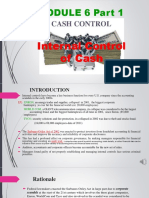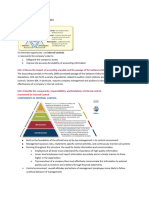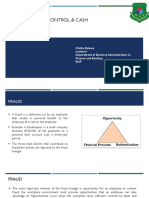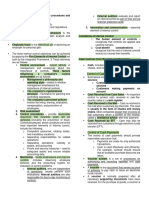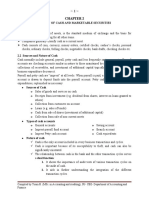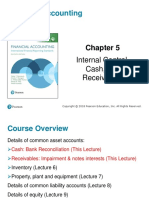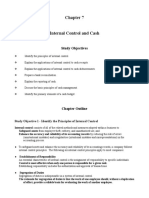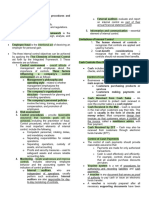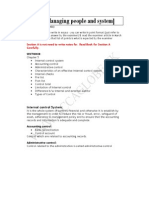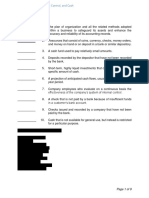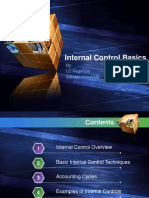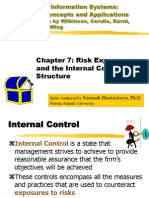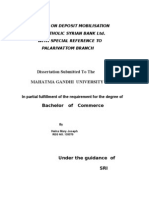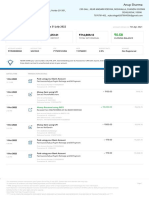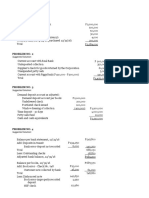0% found this document useful (0 votes)
30 views11 pages10e Chapter 7 Study Guide (Student)
Chapter 7 covers fraud, internal control, and cash management, defining fraud as a dishonest act benefiting an employee at the employer's expense. It outlines the principles of internal control, including the fraud triangle, and emphasizes the importance of bank accounts and reconciliations in safeguarding cash. Additionally, it discusses the reporting of cash on financial statements and the distinction between cash and cash equivalents.
Uploaded by
samaiasingh2006Copyright
© © All Rights Reserved
We take content rights seriously. If you suspect this is your content, claim it here.
Available Formats
Download as DOCX, PDF, TXT or read online on Scribd
0% found this document useful (0 votes)
30 views11 pages10e Chapter 7 Study Guide (Student)
Chapter 7 covers fraud, internal control, and cash management, defining fraud as a dishonest act benefiting an employee at the employer's expense. It outlines the principles of internal control, including the fraud triangle, and emphasizes the importance of bank accounts and reconciliations in safeguarding cash. Additionally, it discusses the reporting of cash on financial statements and the distinction between cash and cash equivalents.
Uploaded by
samaiasingh2006Copyright
© © All Rights Reserved
We take content rights seriously. If you suspect this is your content, claim it here.
Available Formats
Download as DOCX, PDF, TXT or read online on Scribd
/ 11








